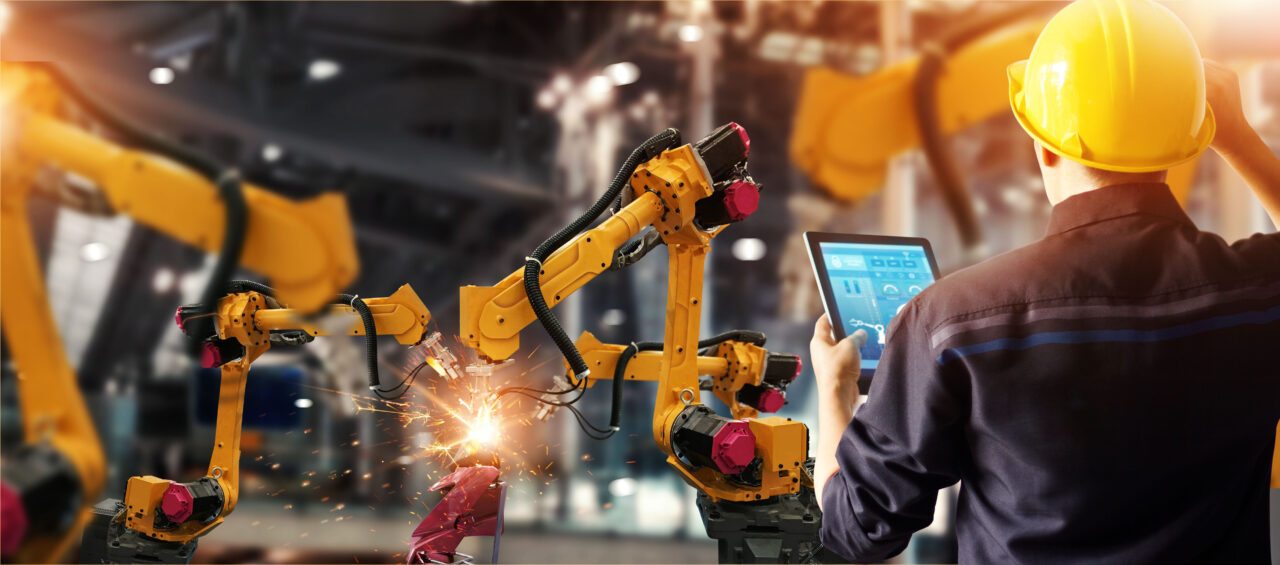
Developing methods for networking new technologies in order to increase efficiency and productivity was the guiding principle of Industry 4.0 – first publicized in 2011. However, a new term has been discussed for some time and suggests that we are already approaching the next phase of industrialization. Others speak of a correction that is long overdue. While a few years ago people were mainly replaced by machines and the introduction of automation, today they are supposed to be the focus again.
What is behind the term Industry 5.0?
The term describes the direct cooperation between humans and „intelligent” machines. Robots aim to help people work faster and better by leveraging technologies like the Internet of Things (IoT) and Big Data. A personal, human touch is added to the pillars of Industry 4.0 – work processes designed to support people physically and mentally.
Industry 5.0 is defined as a sustainable, intelligent and fully connected society that uses cutting-edge technology to improve both its own quality of life and the world itself. Such a society is based on services, platforms and digital infrastructures, which in turn are based on technologies such as AI, KI, augmented and virtual reality, blockchain and the Internet of Things. The three core objectives are:
Advancing the benefit argument
Adaptation of the education systems to the „digital natives”
Creation of social acceptance
Sounds pretty futuristic, but strictly speaking it’s almost entirely tangible. In principle, based on the current level of knowledge and product development, it would already be possible in many cases to reshape society as a whole – on a scale roughly equivalent to the industrial revolution of the 18th and 19th centuries.
The future is now
Whether machine learning, robot systems, artificial intelligence or smart language assistants: numerous modern technologies are already firmly integrated into our everyday lives. And the end of the road is far from being reached with Siri and Co. In fact, everything we know and possibly use today is just the beginning.
Certain industries are already a step further than private individuals with their Apple Watch can even imagine – for example healthcare. From intelligent surgical robots that can handle instruments more precisely than humans would ever be able to, to scientific algorithms that help doctors with diagnostics – modern technology is already saving countless lives today. Other areas of work and life will now follow step by step.
Known as the fifth industrial revolution – Industry 5. – is a new paradigm developed and promoted by the European Commission. The main goal of this new vision is for any industrial activity to overcome economic and technical barriers and to meet 2 major objectives such as productivity and efficiency.
In addition, industry 5.0 wants to promote other essential elements for the sectors of the future, and here we refer to human well-being, resilience and sustainability.
The term Industry 5.0, which was developed by the European Commission, emerged as a supplementary concept to Industry 4.0. This new approach encourages industrial development towards a production model geared not only to technological innovation and economic growth, but also to a commitment to environmentally responsible practices. It also supports resilience strategies that strengthen the sector in the face of sudden disruptions such as the emergence of the Covid-19 pandemic.
This program, the main features of which are summarized in the report Industry 5.0 – Towards a sustainable, human centric and resilient European industry, is the result of discussions during two virtual workshops that took place in July 2020. Various research and technology organizations and funding institutions from across Europe took part in these two gatherings. All participants agreed on the need to better integrate social and environmental priorities of the European Union into technological innovation, by shifting the focus from an individual technology to a systemic perspective.
See more on www.octavic.io
And on www.industry50.com